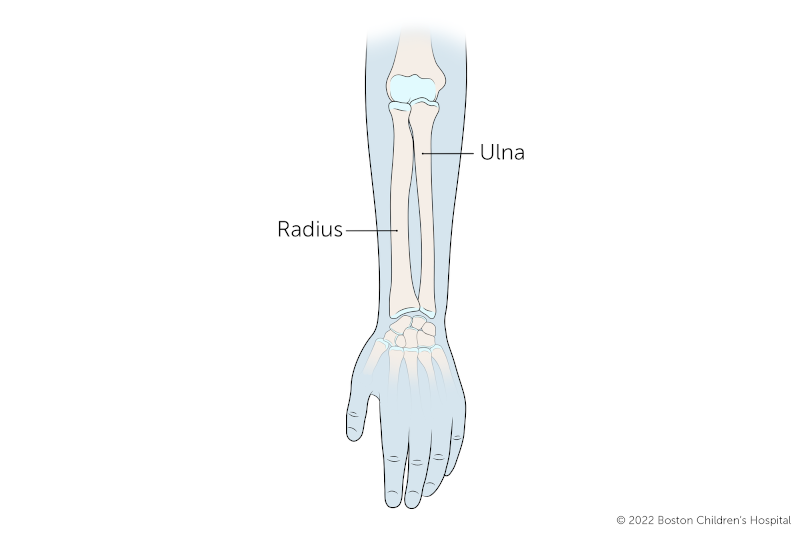Painless and Easy Way to Brake Your Arm
A broken forearm is a break in one (or both) of the bones of the forearm: the radius and/or ulna. The break can occur near the elbow joint, near the wrist joint, or in the middle of the bone. Although the radius can break (fracture) independently of the ulna, it is much more common for the two bones to break together.
Broken forearms are often caused by an impact injury, such as from a fall (as when a child uses his outstretched arm to break a fall) or a direct blow. They are the most common fractures in children, especially if they're active.

What are the different bones of the forearm?
The forearm (lower arm) is the area between the elbow and the wrist. It is made up of two bones: the ulna and the radius.
- Ulna: the ulna runs from the tip of the elbow to the little finger on the side of the wrist.
- Radius: the radius is the bigger of the two forearm bones and runs from the elbow to the wrist on the thumb side.
What are the signs and symptoms of broken forearms in children?
- arm pain that gets worse with wrist or elbow movement
- pain or swelling in the forearm, wrist, or hand
- a noticeable abnormality, such as bent arm or wrist
- difficulty using or moving the arm normally
- warmth, bruising, or numbness in the forearm or wrist
- numbness in the hand
What causes broken forearms in children?
A bone breaks when there's more force applied to the bone than it can withstand. Childhood broken forearms can be caused by:
- Falls: Falling onto the bony tip of an elbow is the most common cause of forearm fracture.
- Trauma: A direct blow against a child's forearm (for example, as a result of a car or bike accident) can cause a break in one or both of the bones in the forearm.
- Sports injuries: Many broken forearms occur as a result of mild to moderate (rather than severe) trauma that happens while children are playing or participating in sports.
What are the different types of forearm fractures?
Fractures of the forearm can occur in the radius bone at the wrist, in both the radius and the ulna, and in the ulna alone (near the elbow). Most often, fractures of the radius occur along with injuries to the ulna. Because they are so close together, when one bone is injured, it usually affects the other bone too.
Galeazzi fracture
Happens when the radius breaks (fractures) independently from the ulna. When this happens, the end of the ulna can become dislocated at the wrist.
Plastic deformation
Usually affects the radius or ulna. Children's growing bones are more elastic than adults' bones. With excessive force, a child's bone can experience deformation (bowing) instead of breaking outright. This deformity then remains after the force is removed.
Monteggia fracture
Affects both the ulna and radius. Typically, there's a fracture of the ulna and a dislocation of the elbow at the top of the radius.
Nightstick fracture
Occurs when the ulna fractures independently of the radius. The ulna can be felt all the way from the tip of the elbow to the wrist, making it particularly vulnerable when children fall to the ground and land on their elbows.
Learn more about the different types of fractures in children.
How we care for broken forearms
You can have peace of mind knowing that the skilled experts in our Orthopedic Center's Hand and Orthopedic Upper Extremity Program have treated thousands of babies and children with many arm conditions. We provide expert diagnosis, treatment, and care, and we benefit from our advanced clinical and scientific research.
Source: https://www.childrenshospital.org/conditions/broken-forearm
0 Response to "Painless and Easy Way to Brake Your Arm"
Enregistrer un commentaire